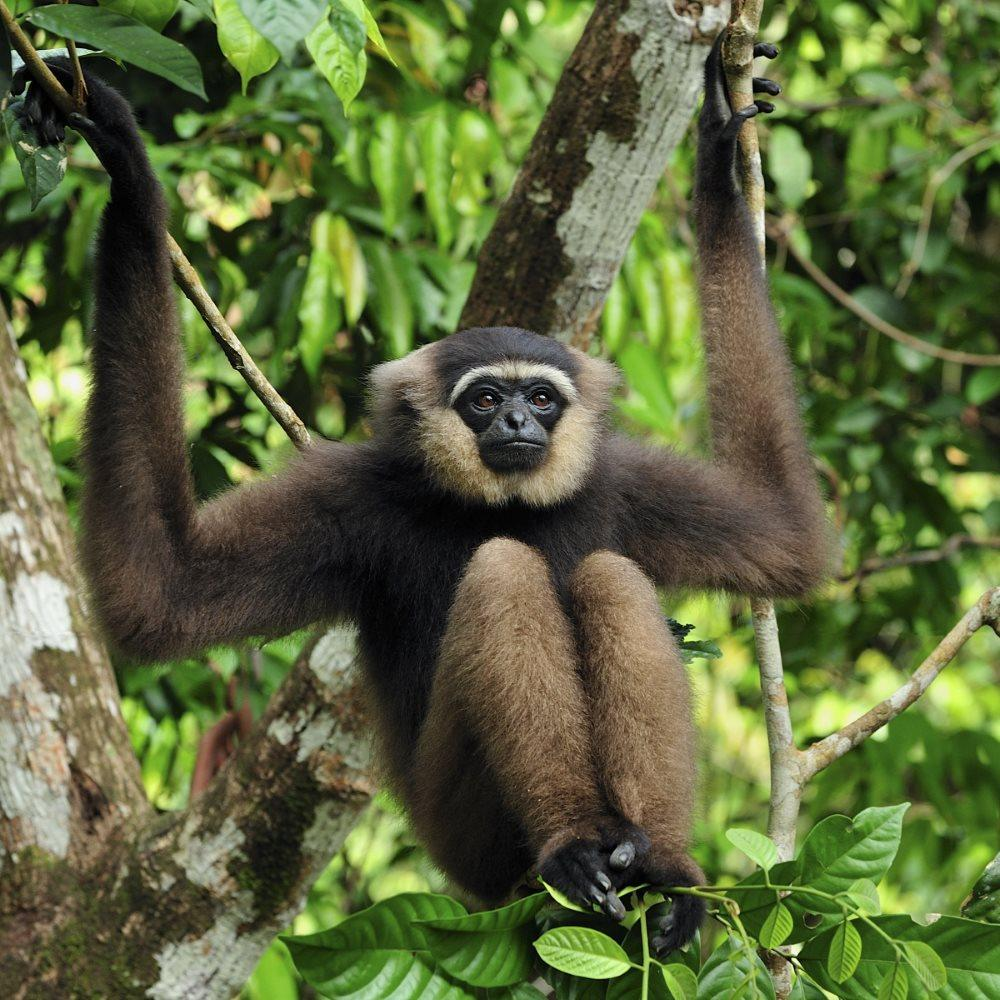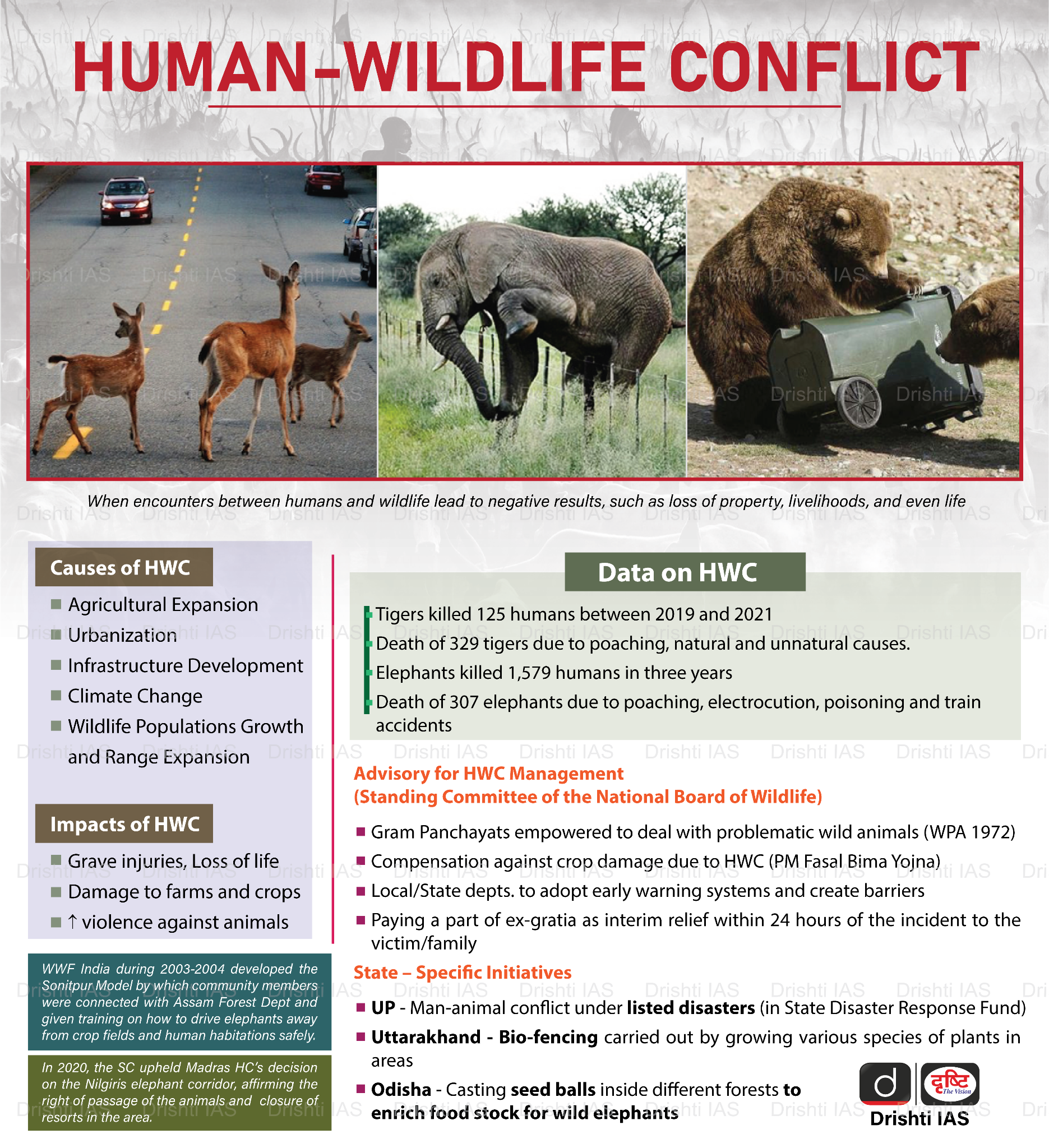Oil Drilling in Assam’s Hoollongapar Gibbon Sanctuary | 02 Aug 2024
For Prelims: Hoollongapar Gibbon Wildlife Sanctuary, Hoolock gibbons, Forest Advisory Committee, IUCN Red List
For Mains: Environmental and Wildlife Concerns, Conservation Challenges in Protected Areas, Biodiversity and Habitat Fragmentation, Human-animal conflict
Why in News?
The Union Environment Ministry’s recent approval for exploratory oil and gas drilling in Assam’s eco-sensitive zones has raised concerns about the potential threat to the endangered hoolock gibbons.
- Cairn India, the oil and gas unit of Vedanta Ltd, seeks to use 4.4998 hectares of reserved forest land for exploration in the eco-sensitive zone of the Hoollongapar Gibbon Wildlife Sanctuary.
How Will Oil and Gas Drilling Impact the Hoolock Gibbon?
- Endangered Species at Risk: The hoolock gibbon, a canopy dweller, is highly sensitive to habitat fragmentation. Any disruption, even minor, can severely impact their movement and survival.
-
Presence of Multiple Species: The area proposed for exploration is home to elephants, leopards, and hoolock gibbons, highlighting the rich biodiversity at stake.
- The are concerns raised that oil drilling could exacerbate human-wildlife conflicts and disrupt these species' habitats.
- Past Incidents: The Baghjan blow-out (2020) in Assam which caused extensive ecological damage, serves as a cautionary example of the risks associated with oil and gas exploration in sensitive areas.
Current Status of the Oil and Gas Drilling Project in Assam
- Approval: Granted preliminary approval for exploratory oil and gas drilling in parts of Assam, specifically within the Hoollongapar Gibbon Wildlife Sanctuary and other ecologically sensitive areas.
- Although the Forest Advisory Committee (FAC) has deferred its final decision.
- A separate proposal for extended reach drilling within this park has been rejected by the FAC, aligning with Supreme Court directives.
- The Supreme Court in 2023 directed that mining within a national park and wildlife sanctuary and within an area of one km from their boundary shall not be permissible.
- Environmental and Wildlife Concerns: The FAC has suggested preparing a wildlife management and mitigation plan to minimise disturbance to the hoolock gibbons and other wildlife.
- The project is subject to strict adherence to safety procedures and preventive measures against landslides and erosion.
What are the Key Facts About the Hoolock Gibbon?
- About: Gibbons, the smallest and fastest apes, live in Asia's tropical and subtropical forests. The hoolock gibbon, unique to India's northeast, is one of 20 gibbon species with an estimated population of 12,000.
-
All 20 gibbon species are at high risk of extinction due to declining populations and distribution since 1900.
-
The hoolock gibbon faces threats primarily from deforestation for infrastructure projects.
-
-
Gibbon Species in India: Two distinct hoolock gibbon species are found in India's northeastern region: the eastern hoolock gibbon (Hoolock leuconedys) and the western hoolock gibbon (Hoolock hoolock).
- A study by Hyderabad-based Centre for Cellular and Molecular Biology (CCMB) in 2021 proved through genetic analysis that there is only one species of ape in India, debunking earlier research that the eastern hoolock gibbon was a separate species.
- The study concluded that the two populations diverged 1.48 million years ago, while gibbons separated from a common ancestor 8.38 million years ago.
- However, the IUCN Red List categorises the western hoolock gibbon as endangered and the eastern hoolock gibbon as vulnerable.
- A study by Hyderabad-based Centre for Cellular and Molecular Biology (CCMB) in 2021 proved through genetic analysis that there is only one species of ape in India, debunking earlier research that the eastern hoolock gibbon was a separate species.
- Conservation:
- In India, the species is protected under Schedule 1 of the Indian (Wildlife) Protection Act 1972.
- The Government of Assam upgraded the Hoollongapar Reserve Forest to a Gibbon Wildlife Sanctuary in 1997, the first protected area dedicated to a primate species.
What are the Key Facts About the Hoollongapar Gibbon Wildlife Sanctuary?
- The Hoollongapar Gibbon Wildlife Sanctuary, established and renamed in 1997, is a crucial protected area in Assam, India.
- Renamed from the Gibbon Wildlife Sanctuary or Hollongapar Reserve Forest in 2004, this sanctuary is renowned for its unique biodiversity, particularly its status as the sole habitat for gibbons in India.
- Flora: Upper Canopy is dominated by the Hollong tree (Dipterocarpus macrocarpus), which grows up to 30 metres tall, along with species like Sam, Amari, Sopas, Bhelu, Udal, and Hingori.
- The Middle Canopy is characterised by the Nahar tree. Lower Canopy features a variety of evergreen shrubs and herbs.
- Fauna: Hoolock Gibbons and Bengal Slow Loris, the only nocturnal primate in Northeastern India.
-
Other Primates: Stump-tailed macaque, northern pig-tailed macaque, eastern Assamese macaque, rhesus macaque, and capped langur.
-
Mammals: Indian elephants, tigers, leopards, jungle cats, wild boar, and various civets, squirrels, and other mammals.
-
|
Drishti Mains Question: Q. How does human-wildlife conflict manifest in areas where industrial activities encroach on natural habitats? |
UPSC Civil Services Examination, Previous Year Questions (PYQs)
Prelims
Q. Consider the following pairs: (2010)
| Protected area | Well-known for | |
| 1. | Bhiterkanika, Orissa | Salt Water Crocodile |
| 2. | Desert National Park, Rajasthan | Great Indian Bustard |
| 3. | Eravikulam, Kerala | Hoolock Gibbon |
Which of the pairs given above is/are correctly matched?
(a) 1 only
(b) 1 and 2 only
(c) 2 only
(d) 1, 2 and 3
Ans: (b)


